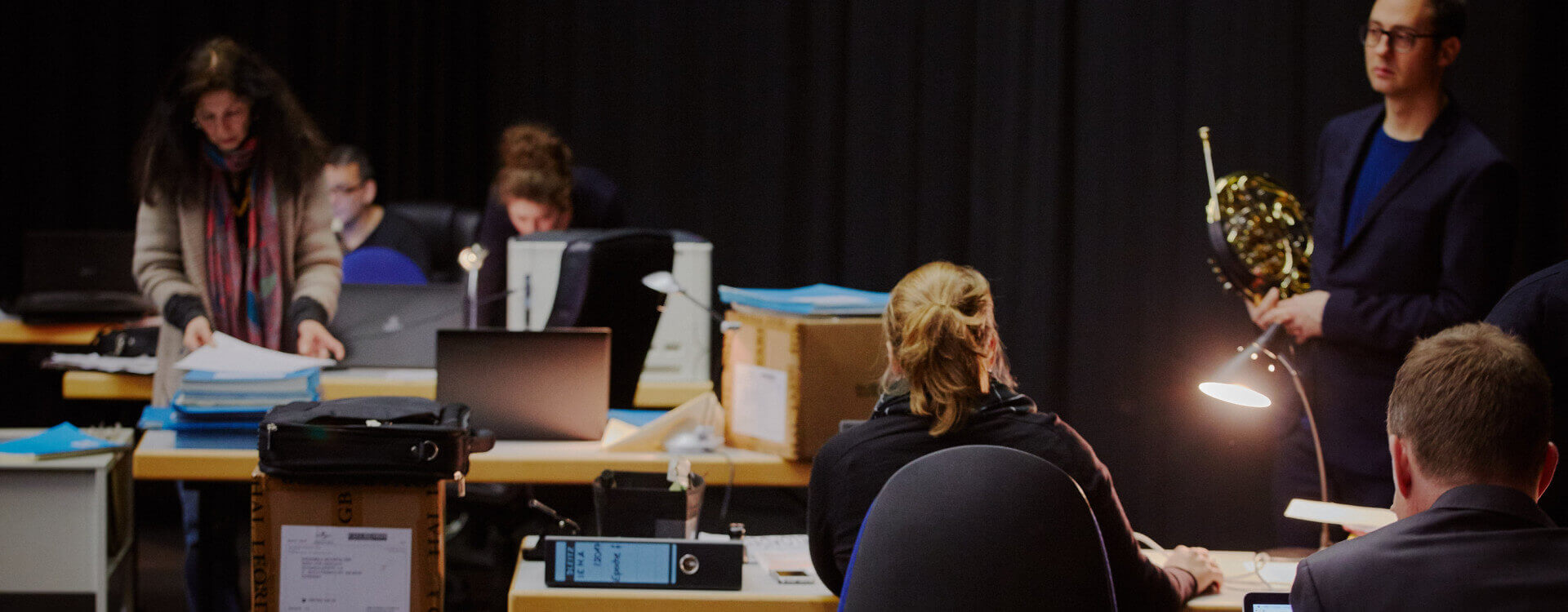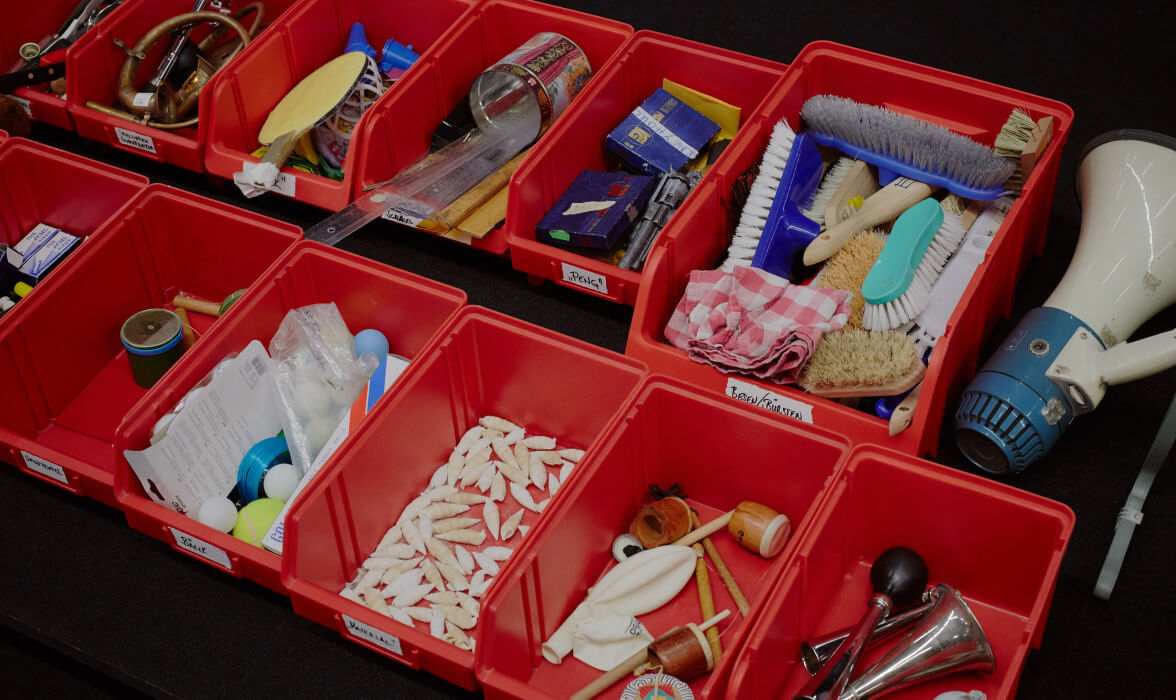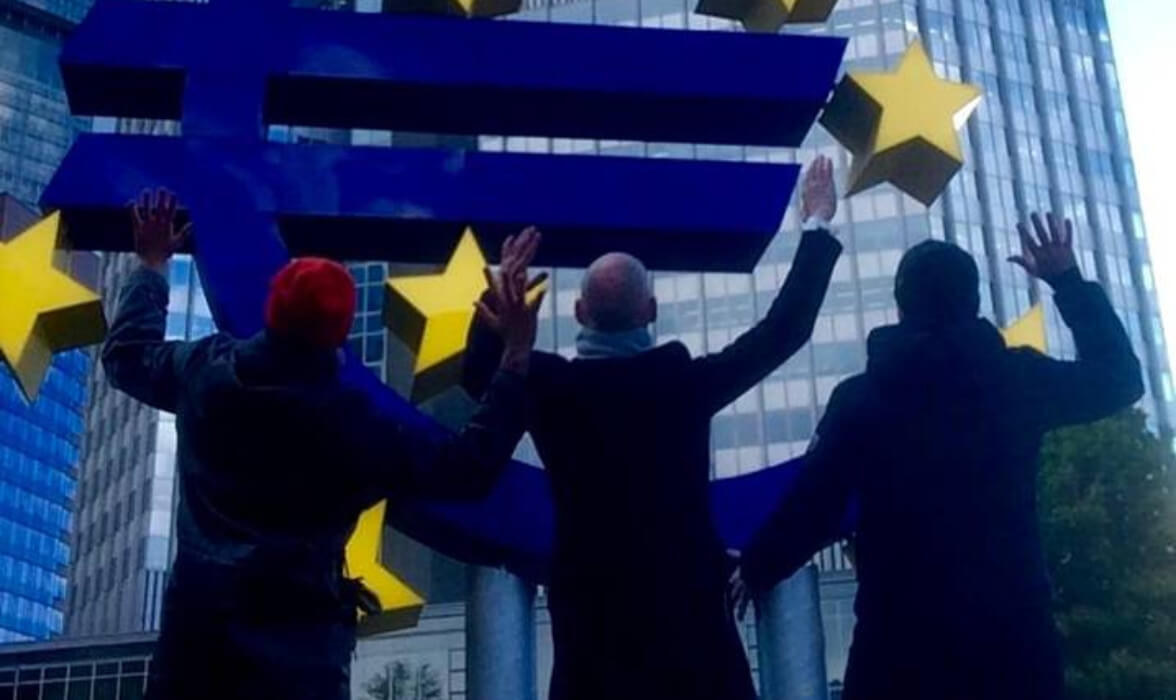Haben Sie 'Modern' gesagt?
AusstellungFor the 2017 Frankfurter Positionen, the Issho Ni Ensemble, founded in 2016, has developed a kind of exhibition concept making explicit reference to the name of Ensemble Modern. The project Haben Sie “Modern” gesagt? (Did you say “Modern”?) aims to demonstrate a different possibility of presenting Ensemble Modern’s work. Not in concert, not staged, illustrative or a s a musical performance. Xavier le Roy, Tiziano Manca and Christophe Wavelet are preparing an exhibition – and Ensemble Modern and all its members and staff are the exhibition’s subjects.
The three artists are seeking to illuminate the collective entity that is Ensemble Modern, the organism, the working unit. The structure, the finances, the logistics. Visitors to the exhibition are invited to look inside this complex entity, where music, instruments, technology, organization, but most importantly, people are in daily interaction.
Another issue to be illuminated: the »Modern« which the Ensemble chose as its banner and name at its founding in 1980. Did they only say »modern«? What does »ensemble« mean, what does the term indicate at Ensemble Modern’s home on Schwedlerstraße? How can working be distinguished from experimentation, and how can any highly specialised expert at his own instrument still even consider experimentation?
Every single Ensemble Modern member was questioned and interviewed. And even those who do not play an instrument – at least not a musical one – in the great Ensemble Modern family received a questionnaire, even EM’s manager and managing director.
Das Issho Ni Ensemble about ›Haben Sie 'Modern' gesagt?‹
The name Ensemble Modern itself explicitly reminds us of the historical simultaneity between the form of the music ensemble and the project of modernity in music. Derived from the model of the symphonic orchestra established during the 19th century, modern music ensembles find their native destination in the concert, understood as the most adequate public mode of musical experience. While the orchestra usually implies the division between soli and tutti, the ensemble is meant to undo such a traditional hierarchy. Nevertheless, its choice of instruments implicitly follows the orchestral model, maintaining the prerequisite of musical virtuosity inherent to the role of orchestral soloists.
Despite being challenged by various artists intermittently since the 20th century, the concert has remained the prevailing format to present and experience music in public. Haben Sie “Modern” gesagt? explores various possibilities offered by another mode of artistic presentation: that of the exhibition. What it seeks to exhibit is not only music but the Ensemble Modern itself. Visitors are therefore invited to experience a series of situations where the human, instrumental and technological dimensions that are necessary to the everyday life of a contemporary music ensemble are brought together and activated anew. It wishes to address the following questions, among others: what is “Modern” in the life of the Ensemble Modern? What does “Ensemble” mean in its working activities? What set of practices do such words imply? How can professional specialization and artistic experimentation be compatible? Is production a means or an end? When does art making look more for emancipation than for profit? How can artistic gestures remain public sites of experience? How can they allow for shared questions to be raised and discussed?
While the audience perambulates across the black carpeting, between desks and instruments sorted by size, sound colour and playing technique, and past music stands, it discovers a world which certainly amazes passionate concertgoers and even the occasional fellow musician.Frankfurter Allgemeine Sonntagszeitung, Eva Maria Magel


